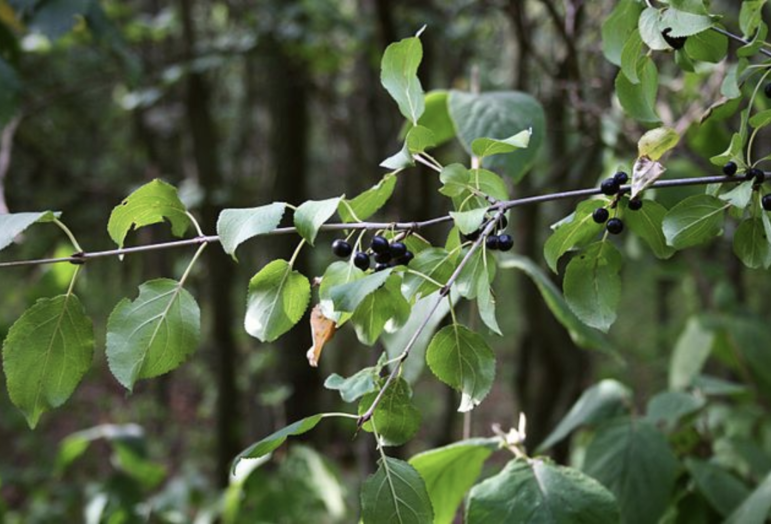East Lansing Parks volunteers swap invasive plants for native ones
Wikimedia Commons, licensed under Creative Commons
Invasive species: Garlic mustard (Alliaria petiolata)
The Environmental Stewardship Program is holding its second Environmental Stewardship Work Day after taking a 10-month break from practice. The event will take place on November 13th from 9-11am from 9-11am at 2801 Abbot Road, East Lansing.
On Environmental Stewardship Work Day, volunteers meet to replace invasive plant species with native Michigan plant species to improve the ecosystems in East Lansing’s parks.
Working days usually take place every second Saturday of the month. They were resumed in October.
Environmental Stewardship Coordinator Heather Majano is focused on getting the Environmental Stewardship Work Days back on track after the long break. She said, “The 10-month hiatus was partly due to COVID and partly because the program changed hands a few times within the department.”
Majano said, “The East Lansing Environmental Stewardship Program is being organized by me in coordination with a senior volunteer. We currently focus on one working day per month, on the second Saturday of each month. I spend the month leading up to the work day talking to groups about volunteering and responding to community queries. Everyone can help and everyone is welcome. “
The return of the Environmental Stewardship Work Days in October was successful. Cathy DeShambo, Director of Parks, Recreation and Arts, said: “I know our last day of work was very well attended.”
An even larger participation is expected for the November working day.
Majano said, “October was the first back and we had about 30 volunteers. For the November working day I have currently signed up 30 volunteers and two groups that are still interviewing their members, but will probably bring 10 people each. Fifty people is the maximum I can comfortably accommodate for one working day. “
The program relies on volunteers to carry out the work needed to improve local ecosystems.
DeShambo said, “With the exception of Heather and sometimes an intern, the work is completed with volunteers. Sometimes a large group wants a working day, and sometimes the day consists of many different volunteers who just want to have fun helping in the parks for a good cause. “
For volunteers, the removal and exchange process consists of hard work based on the environmental stewardship program’s collective knowledge of invasive species, local ecosystems and native plants.

Wikimedia Commons, licensed under Creative Commons
Invasive species: Sea buckthorn (Rhamnus cathartica)
Majano said, “How the plants are removed depends on the plant. Our two main plants that we focus on are garlic mustard in the spring and sea buckthorn in the fall and winter. Garlic mustard is an easy plant to grow from the ground, and sea buckthorn is a tree. “
Majano said, “At Sea Buckthorn, we are working to remove the larger trees, which are usually about the size of an apple tree, and the sprouts. Our working days last about two hours. But we return to the same places many, many times to be removed and replaced. There is a lot to remove. “
On the working day in October, the focus was on sea buckthorn.
Majano said, “We don’t usually remove and plant the same working day, but in October the lead volunteer had some trees he wanted to plant that he had grown during the COVID shutdowns. So we planted five trees and removed about a quarter of an acre of sea buckthorn. We usually only plant in spring and have a full working day or two for it. “
The program is acquiring native Michigan replacements from multiple sources.
Majano said, “Often times we buy trees to replace trees from our local conservation area. They have tree sales in the spring and fall. And for several years we were able to secure tree donations from MSUFCU and buy them from some local tree nurseries. But we also have a tree nursery that is maintained by a volunteer in one of our parks, and two volunteers grow trees for us in their own gardens. ”
“For plants, we buy native plants from the Wild Type Plant Nursery and I run two native seed banks in our parks. These seed banks allow us to have beautiful gardens in the parks and also save money on restoration, ”said Majano.
This attention to local parks and concern for local ecosystems sparked a positive response from community members. Ethan Macka, an MSU student and lover of the parks in East Lansing, said, “Michigan plants should be protected, and I’m glad that is happening. I am happy that there are great people who take care of our ecosystem. After a quick look at the program, I’m definitely interested. “



Comments are closed.